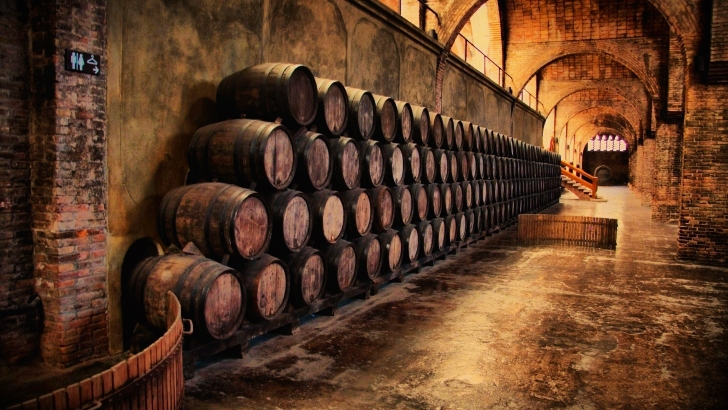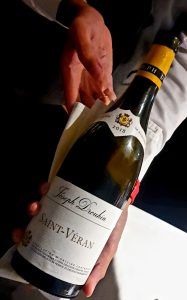For many people, it is sometimes difficult to appreciate the mark-up on wines in restaurants, the significantly higher prices -often for the same wines- we are asked to pay when compared to the supermarket, or the wine shop.
We can fail to consider the significant and measurable added costs in setting and service, for example the furnishings, fittings, artwork, linen, glassware, service staff, training, powered storage, air conditioning, music, mood lighting, decanters, openers, uniforms, flowers, wine list printing costs, and more.
All of these things are carefully incorporated into your dining experience, and hopefully, elevate your appreciation of it. Whilst the owner of the establishment is working out how to juggle and offset these costs against his revenue streams, (namely, food and beverage). Trying to decide just how much is a reasonable amount to recover via wine prices, whilst still hoping to turn a small-to-reasonable profit.
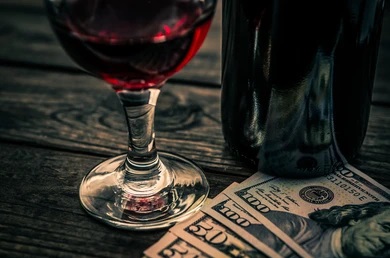

At Khema Restaurant, on Rue Pasteur, they seem to have hit upon an ingenious solution. Famous for their artisan bakery, patisserie, fromagerie and charcuterie -which customers drop in and purchase to take home; Khema has added a wine wall to this ‘store’ part of their establishment. Wines are at ‘bottle shop’ prices and are very reasonable indeed. However, the truly exciting offer is that customers can now purchase these wines at the same off-premise prices, and for a small corkage fee, ($10) drink them in the restaurant with their meal; an initiative that is bound to see their sales of wine increase exponentially, both take-home and in-house.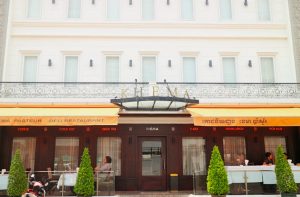

The philosophy of aesthetics is concerned with the nature and appreciation of art, beauty and good taste, much of that study has to do with empirical posteriori evaluations gained from the senses of sight and sound or simultaneous combinations of the two. Yet I have long been absorbed by the organoleptic aesthetics appreciated through smell, touch and taste. Olfaction being the only sense that plugs straight into that part of our brain, where we regulate emotions and store memories, (the limbic system) and the subject matter, (food and beverage) is the only art form where, via gustation, we ingest it into our bodies; making the preparation of foods and beverages the only artform that truly sustains us. The great chefs and winemakers of our world have to be part scientists in their laboratories, (be that kitchen or winery), but the very best are also true artists; as creative, skilful and talented as a Matisse, Mozart or Modigliani.
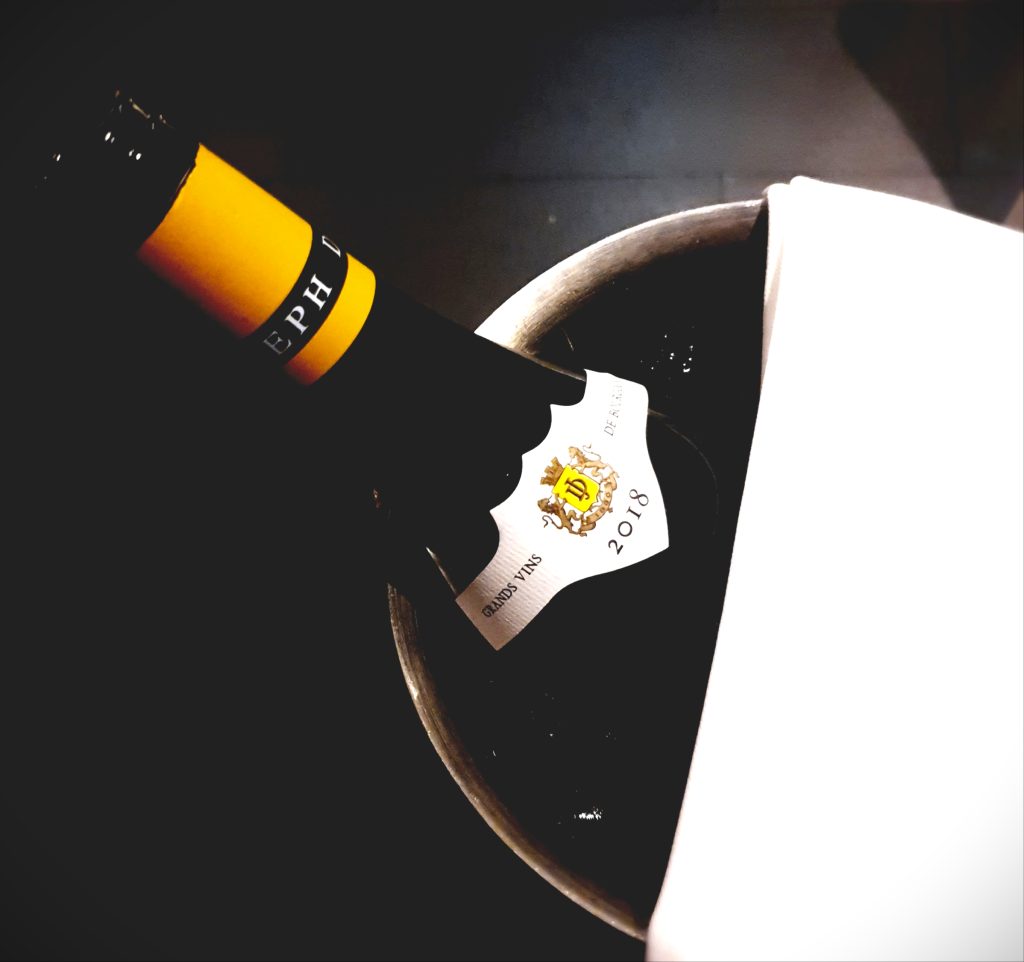

The first course: salmon gravlax, salt and pepper seasoning, dill, beautifully presented with a cheek of lemon, sour cream, capers, rings of allium onion and pearls of ikura roe. The salmon is sliced so fine as to have a translucence, it is flavourful and laden with rich, fatty aminos and omegas.
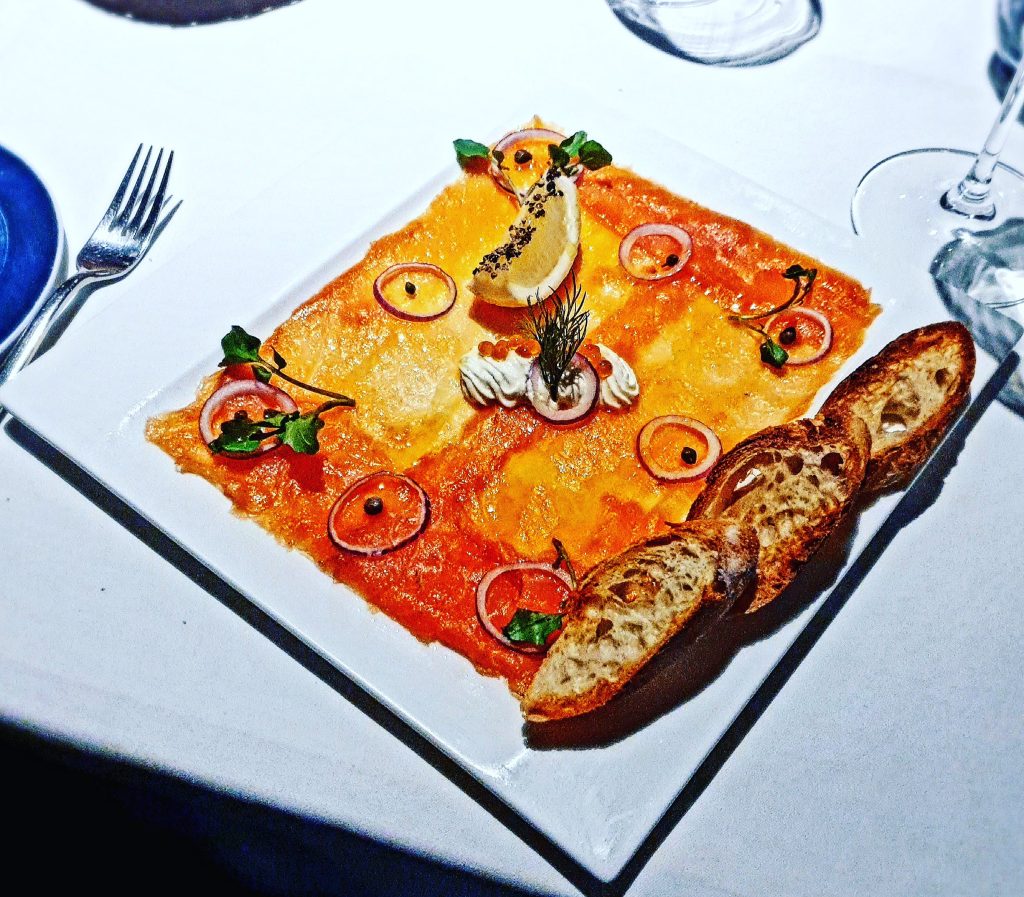

As it’s the first course, I wanted a white wine, a great winemaker and gastronome once joked with me that starting with a white was very important because it prepared the palate for the red to follow -I have never forgotten it. For flavour intensity and palate weight, I opted for a Chardonnay however, this ‘great wall of wine’ had to have the right option, a Chardonnay from a cooler climate, to ensure it had the right structure and all of that minerality and fine acidity that the very best display; I was thinking of white Burgundy.
I settled on a wine from the very respected producer, Joseph Drouhin, a Chardonnay from the extreme south of the Maconnais, in a little sub-region known as Saint Veran. Not dissimilar to a Pouilly Fuisse, the wine showed exceptional fruit with good depth and complexity, wrapped up tightly in fine and bracing minerality, derived from the Jurassic limestone and chalky soils.
The structure is impressive and the flavours showed clean and bright, with fig, orange zest, white peach, hints of carambola and notes of spice. The fruit comfortably matched the protein for intensity, and nicely complemented the dish, whilst the mineral and citrus-like acidity danced along the back of the palate and cleansed it of any oily, fatty residuals, freshening up the palate and diner, ready for another morsel.
It was a truly magnificent combination and one that would prove hard to surpass for the rest of the meal.
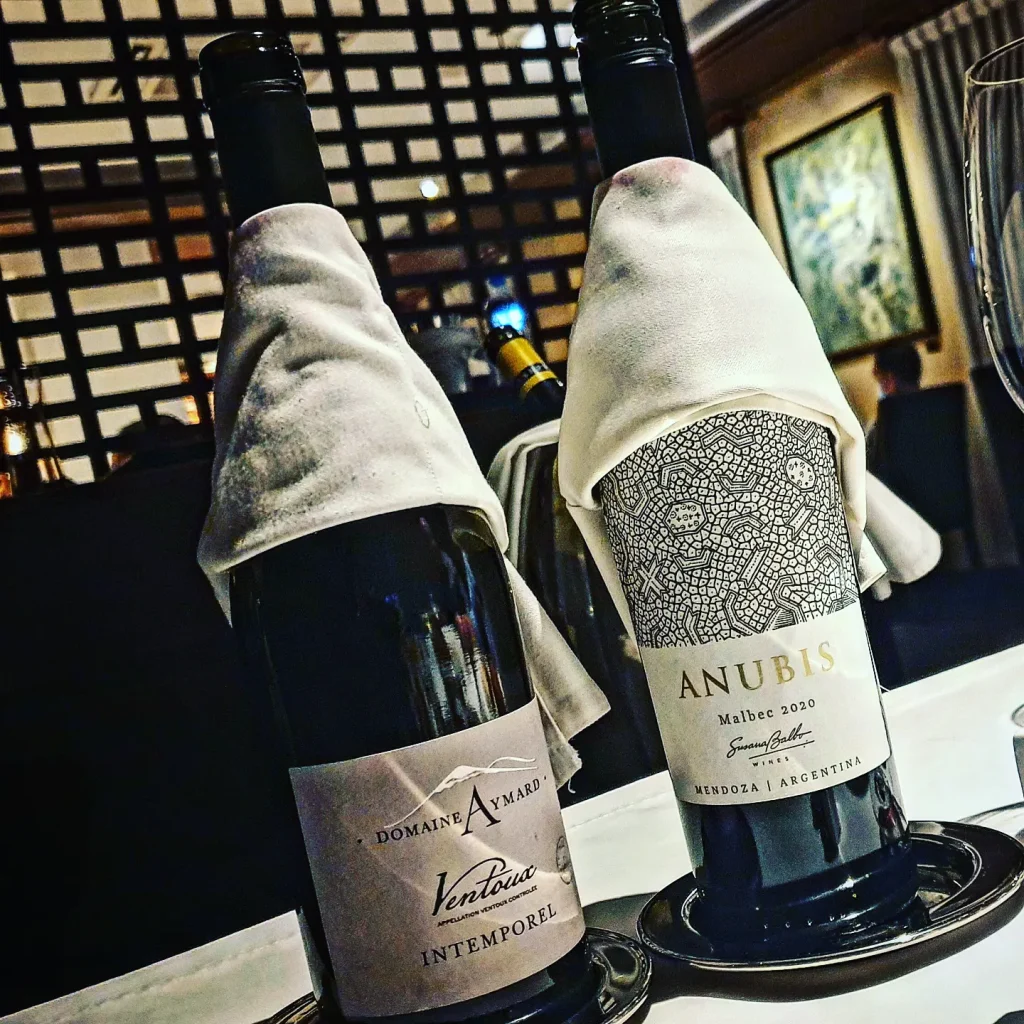

The lamb shank is a cut from the shin of the lamb, it is one of the most flavorful cuts, with the connective tissue giving it a stronger, more gamey flavour. The leanness of this cut means it needs to be braised slow and low, which then gives the dish a juicy, tender, fall-off-the bone texture. The Khema Lamb Shank is exquisitely prepared, tender and juicy.
The wine chosen was named Anubis, an inexpensive Malbec from the Valle de Cafayate, in Mendoza, Argentina. A wine made by the very talented Susana Balbo. A deep, dark, wine-packed full of brooding plum, black cherry, pomegranate and blueberry fruits, with hints of vanilla cola, and pan spices adding a touch of complexity. On the palate, the wine is plush with concentrated, ripe, berry fruit and fine, silky tannins.
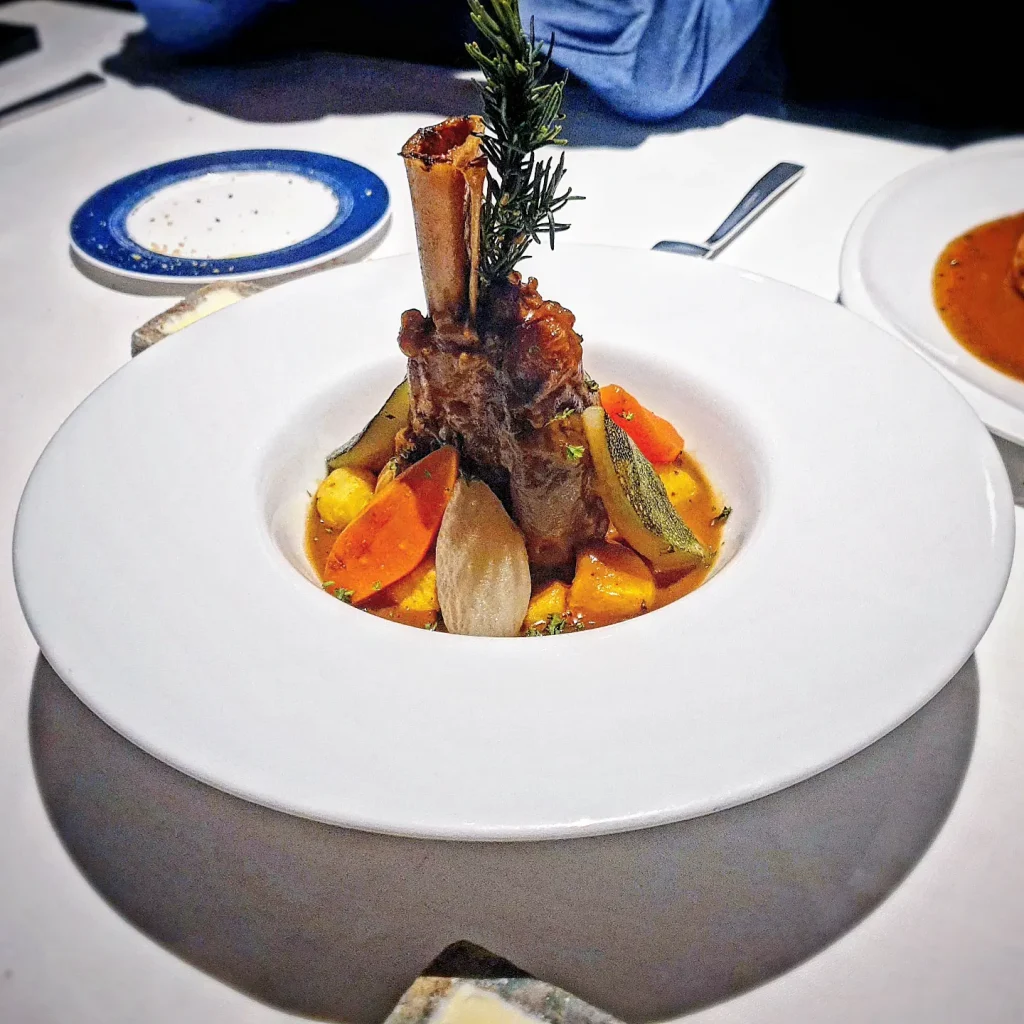

The opportunity to eat a majestic Beef Wellington is always an occasion, always special: a perfect cut of beef tenderloin, rolled in pate, then finely chopped duxelles, all wrapped up in a puff pastry crust and served with a foie gras or Madeira sauce; a great beef wellington is a masterpiece. When it arrives, the Khema Beef Welling is cooked perfectly, each layer melting in your mouth, flavours of sweet rich meat, savoury notes, earthy characters, with a myriad of textures, the dish is a well-executed classic, it is divine.
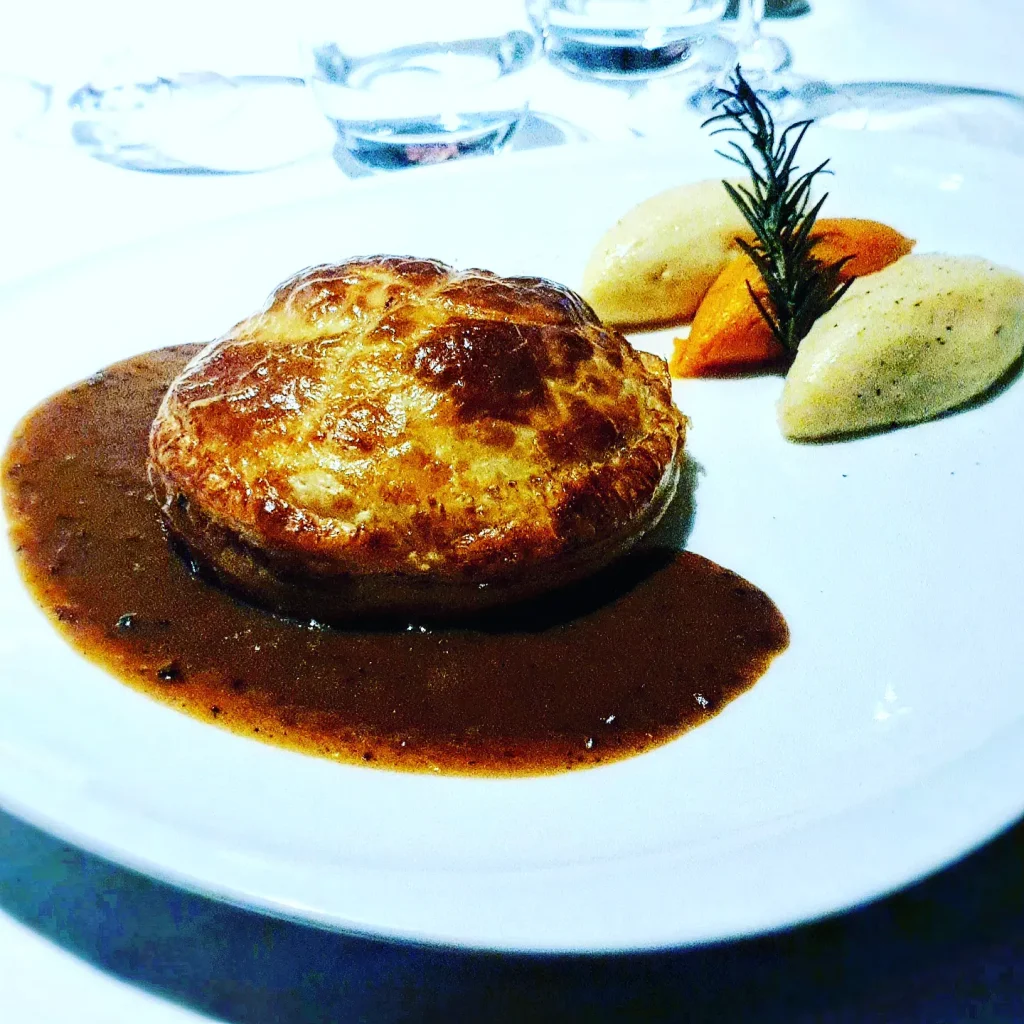

Nestled in the foothills of Mount Ventoux, on the south-easternmost fringes of the Rhone Valley wine region; the vineyards of Ventoux are higher and cooler than those of its more famous neighbours. The vineyards here are also somewhat more protected from the ravages of the infamous Mistral wind. The cooler ripening conditions see grapes retain greater acidity, with more complexity and concentration of flavour, giving the wines depth, elegance and animation.
I opted for a Domaine Aymard Intemporel Rouge from Ventoux, a blend of Grenache, Cinsault and Syrah. A medium-bodied red with good acidity and dry, savoury fruit characters. The wine showed lovely primary fruit notes of raspberry, (Grenache), red currant, violets and black tea (Cinsault) and a hint of plum, olive tapenade and peppery spices (Syrah). A very dry wine, it allowed the complex flavours of the dish to shine, whilst the acidity and very subtle tannins rejuvenated the palate with each sip. The wine earned its stripes here and did more to accentuate the Beef Wellington than compete with it for attention.
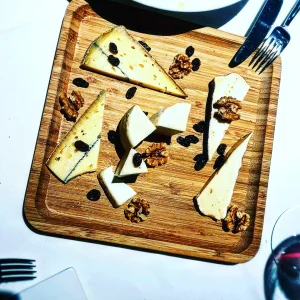

All in, it was an excellent dinner, the food is of a fine dining standard, the wines were exceptional and paired beautifully with the dishes, and the $10 corkage made the whole evening not only extraordinary value for money, but an experience that shall be repeated many, many more times to come. In my view, this now makes Khema the go-to place for high quality, great value food and wine dinners.

